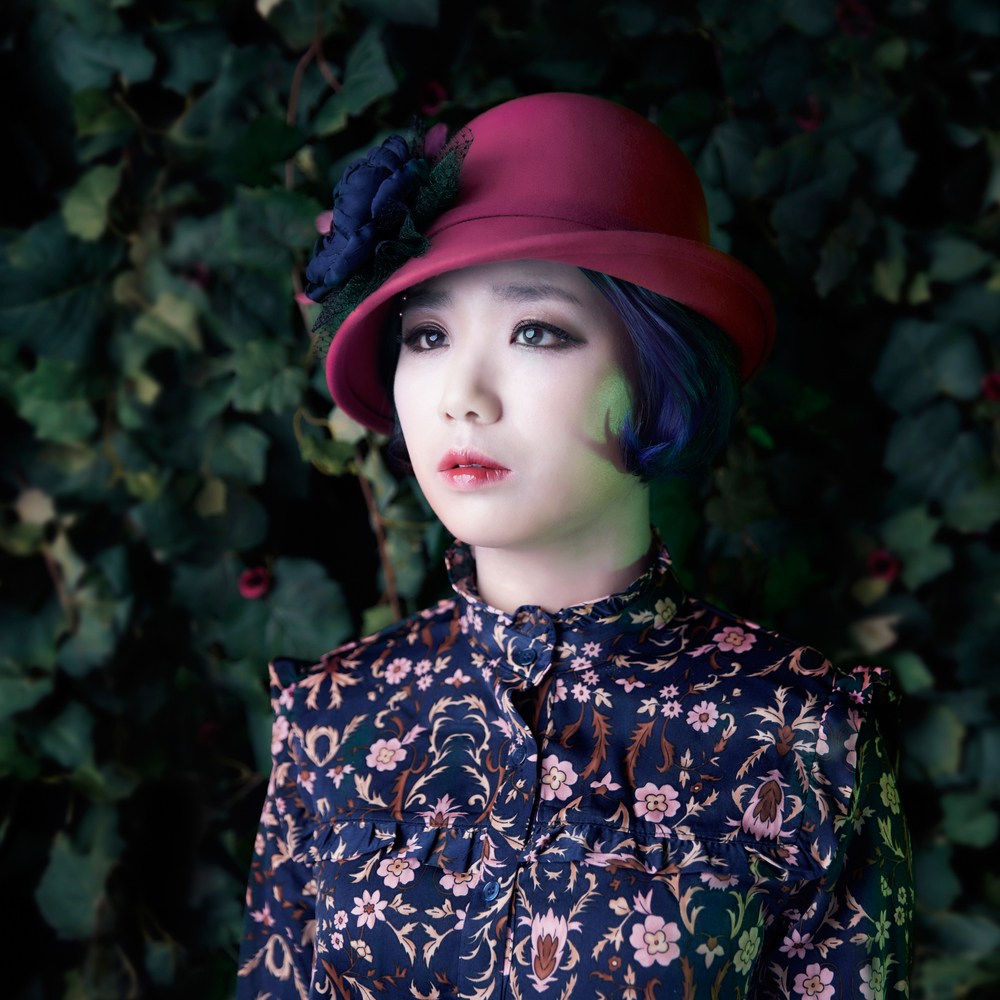‘K-Pop Star‘ runner-up Ahn Ye Eun does not waste any time trying to make a sunny first impression in her self-produced debut album’s opener, “Elope.” Sass seeps in the spaces between her phrases — with a flick of her voice, she releases each line in a nonchalant, snappy fashion. She floats breezily through the melodies, but when she has to, she digs deep into notes with a muscular tone that is simultaneously sharp and smooth. It doesn’t take long to realize that Ahn Ye Eun is not your typical pop vocalist.
Ahn Ye Eun is rather explicitly inspired by the Korean traditional vocal idiom — its guttural delivery, sharp timbre, elusive ornamentations — but she fuses the idiom with R&B, along with touches of her own vocal style, so seamlessly that it forms one distinct entity. She is a remarkably nimble vocalist with great control; she jumps large intervals in quick amounts of time and frequently delivers words at a rapping pace, such as in “Nipping Wind” and “어쩌다보니.” Although her songs are relatively simple, her rapidly unwinding streams of words are constant sources of momentum to the album.
Her debut album consists of R&B, pop-rock, orchestral ballads that contain a frequently exhilarating crossbreed of folk melodies, and pop riffs. One song that provides a clear view into the gut of Ahn Ye Eun’s musicianship is “Nipping Wind,” a measured ballad made severe by Ahn Ye Eun’s unhinged performance. In the verses, Ahn overlays a folky melody over a long, steady series of pop-inspired piano chords, occasionally hinting at thorny vocal ornamentations. When the strings enter, she exerts the weight of her gut on her middle range with long notes that escape to whimpering high notes, only to collapse downwards again. During these interval leaps, you can hear the gruff, visceral ‘break’ in her voice between her middle and upper register.
Another particularly forceful song on the album is “흥연.” In the opening verses, Ahn wears the waltzy, triple time signature like a glove with a quiet melody in her lower register, giving ample room for a storm to brew. And it does; the chorus is simple but acts as a versatile canvas on which Ahn performs all her earth-shattering vocal acrobatics. Each portion of a second offers a savory flavor of her voice — whether it be the traditional Korean music-inspired wide vibrato, urgent gasps, a virtuosic flip of her voice at the end of a note, portamentos — the gold is all there.
There are a few songs in the middle of the album during which Ahn doesn’t offer much variation in register, dynamics, and tempo, causing the album to stagnate. “달 그림자” is an example of tempo and register variety paying off. In this song, Ahn opts for a slower melody and sings in the lower end of her register, offering a thinner, more intimate tone of her voice that contrasts nicely with the rest of the album.
Throughout the album, Ahn makes frequent use of an orchestra, including several instruments that are unconventional for an indie-pop record such as oboe and harpsichord. However, the arrangements often sound as if they are on auto-pilot, simply doubling Ahn’s melodies or adding rhythmically and harmonically unadventurous accompaniment patterns underneath her. This simplicity occasionally works to Ahn’s favor by acting as a simple backdrop to her involved vocal performances. However, I wish the arrangement could maintain the simplicity while still being equally as inspired as Ahn’s voice.
Despite these flaws, there is one thing for sure: in this album, Ahn Ye Eun stamps herself as a earth-shattering vocalist. She pulls out all the stops in manner that is tasteful, tactful, and not too show-offy. Her songwriting is often delightful and flatters her voice, although some variety to her pieces and spices to her arrangements would be welcome. This album is an lovely crossover gem and I’m excited to see where Ahn will take her voice next.
—–
Ahn Ye Eun: Facebook
=====
‘Ahn Ye Eun’ Album
“Some How” Song
 Asian Junkie Asian pop. Without discretion.
Asian Junkie Asian pop. Without discretion.
